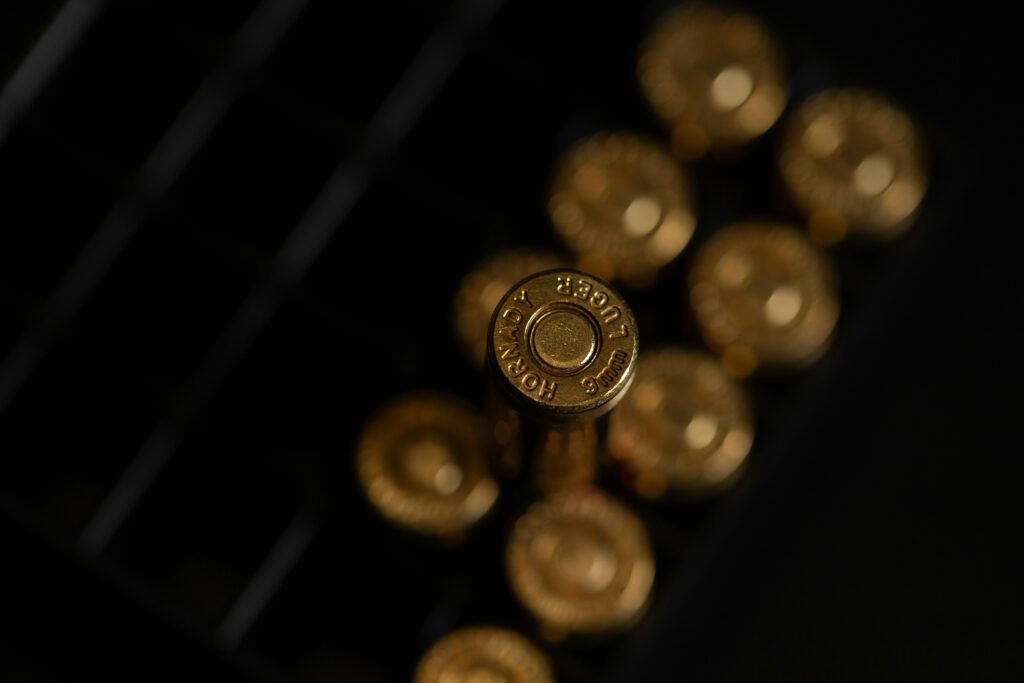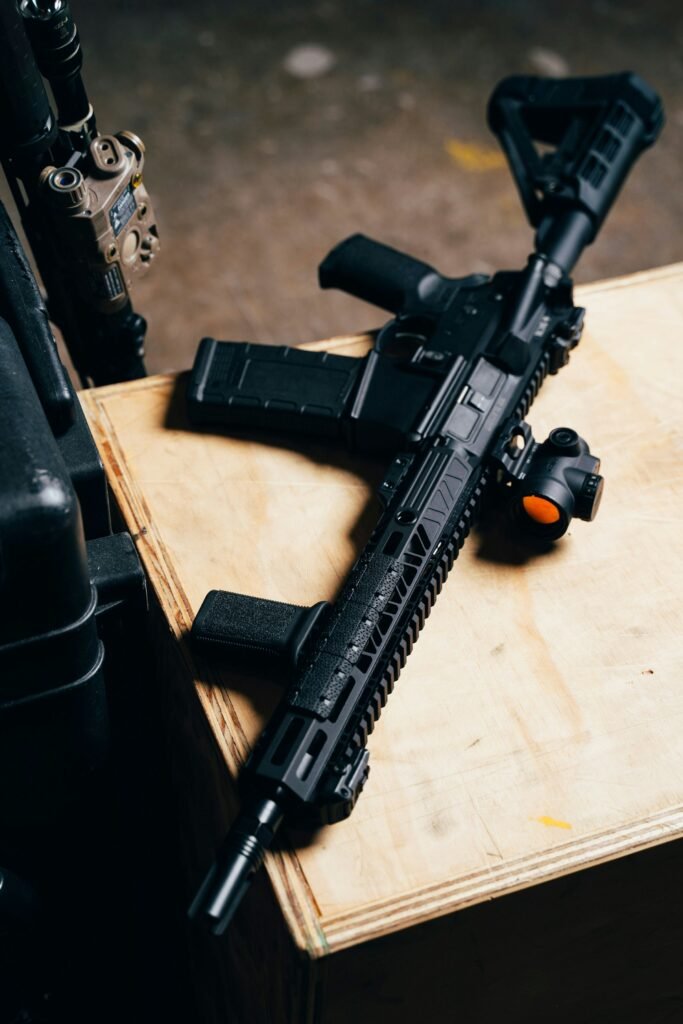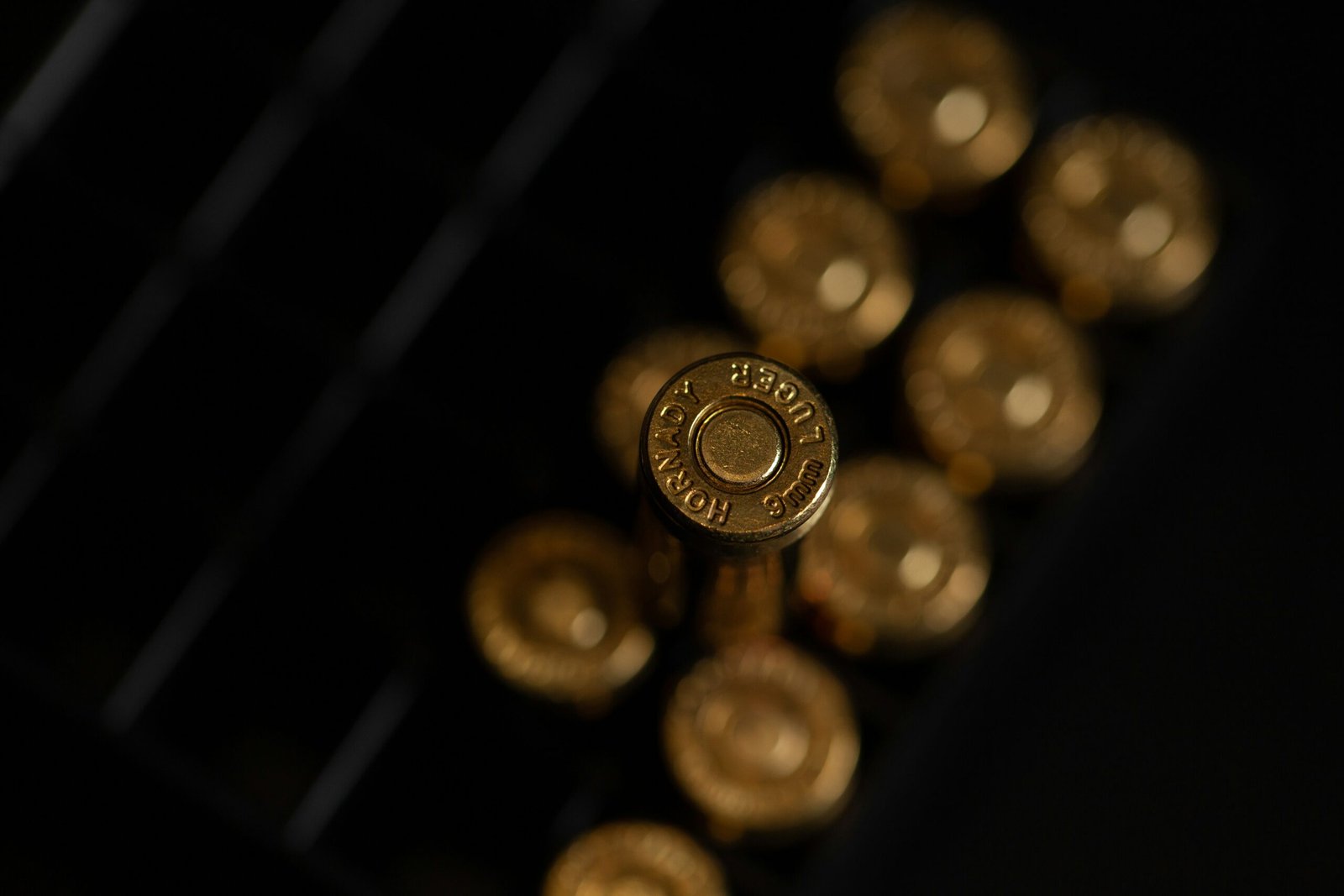Welcome to the ultimate guide on choosing the best firearms and ammunition for your range training purposes. Whether you’re a seasoned shooter or just starting out, it’s important to select the right equipment that suits your needs and preferences. In this article, you will learn about factors to consider when choosing firearms and ammunition, as well as tips on selecting the best options for your range practice. By the end, you’ll be well-equipped to make informed decisions and enhance your shooting skills.
Have you ever wondered how to choose the best firearms and ammunition for range training?
It can be overwhelming to navigate the world of firearms and ammunition, especially when you are just getting started with range training. But fear not, as we are here to provide you with a comprehensive guide that will help you make informed decisions when selecting the best firearms and ammunition for your range training needs. Whether you are a beginner seeking advice or a seasoned shooter looking for some new tips, this guide has got you covered!

This image is property of images.unsplash.com.
Understanding the Different Types of Firearms
When it comes to range training, one of the first decisions you will need to make is selecting the right type of firearm for your needs. There are several different types of firearms available, each with its own set of advantages and disadvantages. Understanding the differences between these types of firearms will help you make an informed decision when selecting the best one for your range training.
Handguns
Handguns are a popular choice for range training due to their versatility and ease of use. They are compact, lightweight, and easy to handle, making them an excellent option for beginners and experienced shooters alike. Handguns come in various sizes and calibers, so it’s essential to choose one that feels comfortable in your hand and suits your shooting style.
Rifles
Rifles are another popular choice for range training, offering greater accuracy and longer ranges compared to handguns. They come in various configurations, including bolt-action, semi-automatic, and fully automatic. Rifles are commonly used for precision shooting and long-range target practice, making them an ideal choice for more advanced shooters.
Shotguns
Shotguns are versatile firearms that are well-suited for shooting sports such as clay pigeon shooting and trap shooting. They are also popular for home defense due to their stopping power and wide spread of pellets. Shotguns come in various gauges, with 12-gauge being the most common. When selecting a shotgun for range training, consider the type of shooting sports you plan to participate in to choose the best shotgun for your needs.
Choosing the Right Caliber
Once you have decided on the type of firearm you want for range training, the next step is to select the right caliber. The caliber of a firearm refers to the diameter of the bullet it fires, and choosing the right caliber is essential for achieving optimal performance and accuracy on the range. There are several factors to consider when selecting the right caliber for your firearm, including recoil, cost, availability, and intended use.
9mm
The 9mm caliber is one of the most popular choices for range training due to its manageable recoil, affordability, and widespread availability. 9mm ammunition is commonly used in handguns and rifles, making it a versatile choice for shooters of all skill levels. When selecting a firearm chambered in 9mm, consider factors such as barrel length, action type, and intended use to ensure you choose the right gun for your needs.
.223/5.56mm
The .223/5.56mm caliber is commonly used in rifles, offering good accuracy and manageable recoil. This caliber is popular for long-range shooting and target practice, making it a suitable choice for more experienced shooters. When selecting a firearm chambered in .223/5.56mm, consider factors such as twist rate, barrel length, and intended shooting distance to maximize performance on the range.
12 Gauge
The 12-gauge caliber is popular for shotguns, offering excellent stopping power and versatility for a variety of shooting sports. 12-gauge ammunition comes in various loads, including birdshot, buckshot, and slugs, making it a flexible choice for range training. When selecting a shotgun chambered in 12 gauge, consider factors such as barrel length, choke type, and intended use to choose the best shotgun for your needs.
Understanding Ammunition Types
In addition to selecting the right caliber for your firearm, it’s essential to consider the type of ammunition you will be using for range training. There are several different types of ammunition available, each designed for specific purposes and shooting sports. Understanding the differences between these types of ammunition will help you choose the best one for your range training needs.
FMJ (Full Metal Jacket)
FMJ ammunition is a popular choice for range training due to its affordability and reliability. FMJ bullets are jacketed with a layer of metal to improve their aerodynamics and penetration, making them suitable for target practice and plinking. When selecting FMJ ammunition for range training, consider factors such as bullet weight, muzzle velocity, and accuracy to ensure you choose the best ammunition for your needs.
JHP (Jacketed Hollow Point)
JHP ammunition is designed for self-defense and hunting, offering superior terminal performance and expansion upon impact. JHP bullets are jacketed with a layer of metal and have a cavity in the nose to facilitate expansion, making them ideal for stopping threats quickly and effectively. When selecting JHP ammunition for range training, consider factors such as bullet weight, expansion characteristics, and penetration depth to ensure you choose the best ammunition for your needs.
Buckshot
Buckshot is a type of shotgun ammunition commonly used for hunting and self-defense. Buckshot shells contain multiple lead pellets that spread upon firing, making them effective for hitting moving targets and stopping threats at close range. When selecting buckshot for range training, consider factors such as pellet size, shell length, and choke type to ensure you choose the best ammunition for your needs.
Factors to Consider When Selecting Firearms and Ammunition
When selecting firearms and ammunition for range training, there are several factors to consider to ensure you choose the best ones for your needs. Taking these factors into account will help you make informed decisions when shopping for firearms and ammunition for range use.
Budget
One of the most important factors to consider when selecting firearms and ammunition for range training is your budget. Firearms and ammunition can vary widely in price, so it’s essential to set a budget and stick to it when making your purchases. Consider factors such as firearm cost, ammunition cost, and accessories when determining your budget to ensure you get the best value for your money.
Shooting Experience
Another crucial factor to consider when selecting firearms and ammunition for range training is your shooting experience. If you are a beginner, you may want to start with a handgun chambered in 9mm and FMJ ammunition for your range training. More experienced shooters may prefer rifles chambered in .223/5.56mm or shotguns chambered in 12 gauge for more advanced training and shooting sports.
Intended Use
When selecting firearms and ammunition for range training, consider your intended use for the firearm. Are you training for self-defense, hunting, competitive shooting, or simply recreational target practice? Your intended use will dictate the type of firearm and ammunition you should choose to achieve optimal performance on the range. Consider factors such as shooting distance, shooting sports, and target type when selecting firearms and ammunition for your needs.

This image is property of images.unsplash.com.
Tips for Buying Firearms and Ammunition
Now that you have a better understanding of how to select the best firearms and ammunition for range training, here are some tips to help you make smart purchasing decisions when shopping for firearms and ammunition.
Research
Before making a purchase, take the time to research different firearms and ammunition options to determine which ones best suit your needs. Read reviews, watch videos, and visit shooting ranges to test out different firearms and ammunition to get a feel for what works best for you. By doing your research, you can make informed decisions when selecting firearms and ammunition for range training.
Consult with Experts
If you are unsure about which firearms and ammunition to choose for range training, don’t hesitate to consult with experts in the field. Visit local gun shops, shooting ranges, and firearm instructors to get advice on selecting the best firearms and ammunition for your needs. Experts can provide valuable insights and recommendations to help you make the right decisions when shopping for firearms and ammunition.
Test Before You Buy
Before making a purchase, it’s essential to test different firearms and ammunition to ensure they meet your needs and preferences. Visit shooting ranges that offer firearm rentals or participate in shooting events that allow you to test out different firearms and ammunition types. By testing before you buy, you can make sure you choose the best firearms and ammunition for your range training needs.
Conclusion
Selecting the best firearms and ammunition for range training is an important decision that requires careful consideration and research. By understanding the different types of firearms, calibers, and ammunition available, you can make informed decisions that will help you achieve optimal performance on the range. Whether you are a beginner seeking advice or a seasoned shooter looking for some new tips, this comprehensive guide has provided you with the knowledge and insights you need to select the best firearms and ammunition for your range training needs. Happy shooting!
